 November 19, 2009 John E. Ross, KD8IDJ, Editor
| |||||||||
+ Available on ARRL Audio News + Advocacy: End in Sight for "Third Battle of Bull Run"?
In a Special Meeting on Monday, November 16 of the Manassas City Council, the Council voted "To allow the [City of Manassas] Utility Commission to make a recommendation to the [Manassas] City Manager as part of the FY 2011 Budget regarding the decision to continue offering Internet service; additionally, staff was instructed to discontinue all marketing and advertising of Internet service." This motion passed 4-2. At the meeting, Manassas Director of Utilities Michael Moon told the Council that "it is not cost-effective to continue the internet service on the Main.net BPL communication system as a stand-alone cost center" and that the City "need[s] to make the decision for internet service in the context of what communication system will be used for the City's AMI [Advanced Metering Infrastructure]." Read more here. + Operating: NCVEC to Release New Technician Question Pool in January
+ Operating: SKYWARN Recognition Day Set for December 5
Hints & Kinks : PL-259 Connector Tool for Coax Cables
Tired of using pliers to screw on the PL-259 connectors when you are preparing cables? Pliers always seem to do some damage by the amount of force this task requires. I use an inexpensive 1/2 inch PVC female to male coupler. Simply use a step drill and ream out the female end (see the arrow in the photo). This works for most half inch coaxial cables. PL-259s do vary in diameter. Be sure to measure yours before you ream out the PVC adapter. It will not take a lot of reaming for the connector to fit snugly. The outer part of the PL-259 that fits into the connector is 0.55 inch diameter. This makes a secure fit. If you wear out the adapter, purchase another, as they are inexpensive. This works for me. -- 73, Paul Marsha, K4AVU, 200 Garden Trail Ln, Lexington, SC 29072-7341 + ARRL Recognizes: Deadline Looming for Nominations for the Bill Leonard Professional Media Award and ARRL International Humanitarian Award
Did you see an article or news segment on Amateur Radio this past year in the papers, on TV, radio or a professional Web site? ARRL Media and Public Relations Manager Allen Pitts, W1AGP, reminds you that you can recognize the professional reporter's work by nominating them for the Bill Leonard Professional Media Award. "Time is running out," he warns. "Nominations for this prestigious award -- which conveys an engraved plaque and a donation of $250 to be made in their names to the charity of their choice -- must be sent in to the League no later than December 11." Find out more about the Bill Leonard Professional Media Award here.
Nominations are also open for the 2009 ARRL International Humanitarian Award. The award is conferred upon an amateur or amateurs who demonstrate devotion to human welfare, peace and international understanding through Amateur Radio. The League established the annual prize to recognize Amateur Radio operators who have used ham radio to provide extraordinary service to others in times of crisis or disaster. All nominations and supporting materials for the 2009 ARRL International Humanitarian Award must be submitted in writing no later than December 31, 2009. Read more about the ARRL International Humanitarian Award here. + Public Service: GAREC Returns to Region 2 for 2010
According to GAREC 2010 Organizing Committee Chairman Seppo Sisatto, PhD, OH1VR, GAREC's mission is two-fold: To help Amateur Radio operators be better prepared for emergency communications and to create emergency communications exercises at both the national and international levels. Exchanging information and experiences among all Amateur Radio operators and groups that are interested in emergency communications helps to promote GAREC's vision of having regular worldwide cooperation and understanding between governments and the Amateur Radio Service in the field of emergency communications. GAREC 2010 is organized in cooperation with the Dutch Amateur Radio Emergency Service (DARES) and Club for Experimental Radio Examination Netherland Antilles (VERONA). Sisatto said that details on the upcoming conference will be announced as they become available. The 2009 ARRL Spectrum Defense Campaign Needs Your Support
ARRL Chief Development Officer Mary Hobart, K1MMH, reports that the ARRL has raised $126,828 toward the goal $310,000 for the 2009 Spectrum Defense Fund. "The messages I receive from the ARRL members and hams who contribute to this much needed fund are heartening," she said, "expressing appreciation for all the work ARRL does for the Amateur Radio community to protect our frequencies. And we can all be proud of the successes that have come from the work of ARRL leadership -- the Board and staff here at HQ. But there is always more to do." Hobart said that year after year, ARRL members tell her that the League's representation of radio operators -- both in Washington and on the international stage -- is one of, if not the most important activities that the ARRL does. "The cost of that representation at meetings in Washington, at IARU gatherings and working party meetings to prepare for world telecommunications conferences is the key to the continued success of our defense efforts," she said. "Spectrum Defense is one of those areas that is not covered completely by member dues. So we ask ARRL members to do what they can to help cover those expenses." Amateurs wishing to make a contribution may do so easily online, via postal mail or by calling the ARRL Development Office at (860) 594-0397. Now You Know!: It's All Greek to Me
We use our transmitters to move the electrons in our antennas to-and-fro to produce radio waves, hopefully to that rare DX destination. When the radio waves get there, they set electrons in another antenna in motion. That current -- electrons in motion -- is amplified and detected at the receiving location and a QSO is made. But why do we call them electrons? The ancient Greeks noticed that amber attracted small objects when rubbed with fur; apart from lightning, this phenomenon is thought to be man's earliest known experience of electricity. Back in the year 1600, the English physician William Gilbert -- in his treatise De Magnete -- coined the New Latin term electricus to refer to this property of attracting small objects after being rubbed. Both electric and electricity are derived from the Latin ÃÂlectrum, which came from the Greek word îλεκÏÏον (ÃÂlektron) for amber. Now you know! Solar Update
Tad "Flutters in sun-beams" Cook, K7RA, reports: Sunspot activity seems to be growing steadily of late: Daily sunspot numbers for November 5-18 were 15, 16, 11, 0, 14, 13, 11, 11, 0, 0, 11, 12, 0 and 29. Sunspot 1029 made its trip around the Sun and has re-emerged as sunspot 1032. A new sunspot -- number 1033 -- has come over the eastern limb of the Sun. This steady appearance of sunspots has raised the MUF over many paths, and 15 meters is beginning to open regularly. In the southern hemisphere -- which gets more solar radiation this time of year -- you can see a pronounced effect on the f0F2 reading around mid-day. This is a measurement taken with an ionospheric sounder on Cocos-Keeling Islands in the Indian Ocean, 12.5 degrees South latitude and 96.8 degrees East longitude. The instrument sweeps a radio signal across the spectrum, beams straight up to the ionosphere overhead and measures the strength of the signal bouncing back to determine optimum frequency. You can see during mid-day f0F2 is going above 10 MHz. Another interesting tool to see varying MUF around the world updated every five minutes is here. The contour lines show the MUF over that particular area. During the day recently, some areas over Africa were going above 30 MHz. Of course, this weekend is the ARRL SSB Sweepstakes Contest, and conditions are expected to be good for this domestic contest. There is a possibility of some disturbance from unsettled geomagnetic conditions, possibly peaking on Saturday. Predicted planetary A index for November 19-23 is 7, 10, 15, 9 and 6. Look for more information in the Solar Update, available on the ARRL Web site on Friday, November 19. For more information concerning radio propagation, visit the ARRL Technical Information Service Propagation page. This week's "Tad Cookism" brought to you by John Keats' On Receiving a Curious Shell, and a Copy of Verses, by the Same Ladies. Silent Keys + Prolific Amateur Radio and SWL Author Harry Helms, W5HLH (ex-AA6FW) (SK)
After a long bout with cancer, Harry Helms, W5HLH (ex-AA6FW), passed away Sunday, November 15. He was 57. Notorious for his witticisms and geniality, Helms was known for his many books -- such as Shortwave Listening Guidebook: The Complete Guide to Hearing the World, All About Ham Radio, How to Tune the Secret Short Wave Spectrum and Handbook of Radio Communications Servicing and Maintenance -- and his monthly column "You Should Know: Interesting Thoughts and Ideas for Enjoying the Hobby" in Popular Communications. Read more here. QST Author George Badger, W6TC (SK)
George Badger, W6TC, of Portola Valley, California, passed away on Sunday, November 15. He was 84. Originally licensed in 1939 as W6RXW when he was 14, Badger was a member of the ARRL for 67 of his 69 year amateur career. After World War II service with the 89th Infantry Signal Company in Europe, he graduated from the University of California with a degree in electrical engineering. Badger held seven patents on microwave tube and circuit design and was Marketing Director for EIMAC, was President of Svetlana and consulted for CPII Econco. Badger published many technical articles professionally and in the amateur press. First published in QST in 1981, Badger's most recent article, "The Pileup Buster," was published in October 2008; his next article, "Easy to Make Four-to-One Coreless Baluns," is scheduled to be published in a spring 2010 issue. Badger was a Fellow in the Radio Club of America. His Amateur Radio interests included building equipment, antennas and working DX. Badger held DXCC Top of Honor Roll (Mixed), DXCC Honor Roll (both Phone and CW), 5BDXCC (with endorsements on 160, 30, 17 and 12 meters), DXCC on all bands (160-10) and 5BWAZ. He also exceeded 2500 points on the DXCC Challenge. Contributions in memory of Badger can be made to the Stanford University Medical Center, Department of Immunology, 2700 Sand Hill Rd, Menlo Park, CA 94025. Funeral arrangements are pending. This Week on the Radio
This week, the ARRL Sweepstakes Contest (SSB) is November 21-23. The Feld Hell Sprint is November 21. The LZ DX Contest is November 21-22 and the NA Collegiate ARC Championship (SSB) is November 21-23. The EU PSK63 QSO Party is November 22. Next week, look for an NCCC Sprint on November 27. The CQ Worldwide DX Contest (CW) is November 28-29. All dates, unless otherwise stated, are UTC. See the ARRL Contest Branch page, the ARRL Contest Update and the WA7BNM Contest Calendar for more info. Looking for a Special Event station? Be sure to check out the ARRL Special Event Station Web page. ARRL Continuing Education Course Registration
| |||||||||
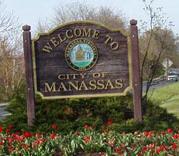 ARRL Chief Executive Officer David Sumner, K1ZZ, once termed the battle of Broadband over Power Lines (BPL) in Manassas, Virginia as the "Third Battle of Bull Run." While the war against harmful interference to Amateur Radio via BPL is not yet over, the battle in Manassas might soon be coming to an end.
ARRL Chief Executive Officer David Sumner, K1ZZ, once termed the battle of Broadband over Power Lines (BPL) in Manassas, Virginia as the "Third Battle of Bull Run." While the war against harmful interference to Amateur Radio via BPL is not yet over, the battle in Manassas might soon be coming to an end. The Question Pool Committee (QPC) of the National Conference of Volunteer Examiner Coordinators (NCVEC) is due to release the new Technician class (Element 2) question pool to the 14 VECs on December 1, 2009; it will be released to the public in January 2010. Each question pool for the three Amateur Radio license classes -- Technician, General and Amateur Extra -- is reviewed on a four-year rotation. This new Technician class pool will become effective on July 1, 2010. Read more
The Question Pool Committee (QPC) of the National Conference of Volunteer Examiner Coordinators (NCVEC) is due to release the new Technician class (Element 2) question pool to the 14 VECs on December 1, 2009; it will be released to the public in January 2010. Each question pool for the three Amateur Radio license classes -- Technician, General and Amateur Extra -- is reviewed on a four-year rotation. This new Technician class pool will become effective on July 1, 2010. Read more 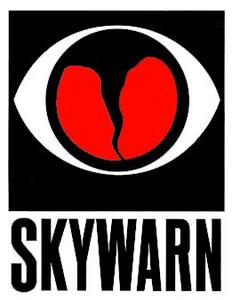 The 11th Annual SKYWARN Recognition Day (SRD) Special Event will take place Saturday, December 5, 2009. SRD is co-sponsored by the ARRL and the National Weather Service (NWS) as a way to recognize the commitment made by Amateur Radio operators in helping to keep their communities safe. According to SRD Coordinator David Floyd, N5DBZ, Amateur Radio operators can visit their local participating NWS office to contact other hams across the world throughout the 24 hour event. Read more
The 11th Annual SKYWARN Recognition Day (SRD) Special Event will take place Saturday, December 5, 2009. SRD is co-sponsored by the ARRL and the National Weather Service (NWS) as a way to recognize the commitment made by Amateur Radio operators in helping to keep their communities safe. According to SRD Coordinator David Floyd, N5DBZ, Amateur Radio operators can visit their local participating NWS office to contact other hams across the world throughout the 24 hour event. Read more 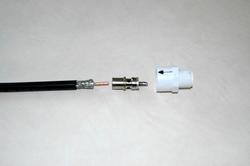


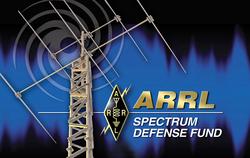
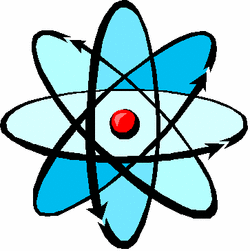 Ask any high school physics student and they'll tell you that electrons govern pretty much everything we do. We call electrons in motion an electrical current, and those radio waves that we hams are so fond of are the result of high frequency electrons traveling in our antenna conductors. Think of a 40 meter wave as an accidental tourist who wants to go somewhere (somewhere nice and warm, maybe a rare DX station). But how to get there? It needs some mode of transport -- think of electrons as the transport providers.
Ask any high school physics student and they'll tell you that electrons govern pretty much everything we do. We call electrons in motion an electrical current, and those radio waves that we hams are so fond of are the result of high frequency electrons traveling in our antenna conductors. Think of a 40 meter wave as an accidental tourist who wants to go somewhere (somewhere nice and warm, maybe a rare DX station). But how to get there? It needs some mode of transport -- think of electrons as the transport providers.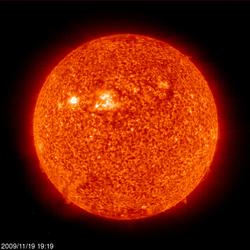
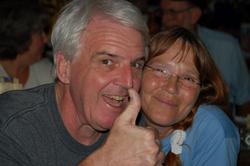
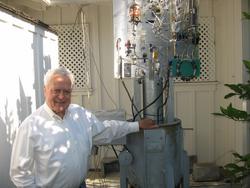
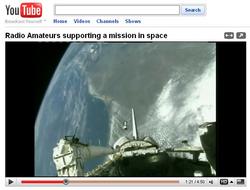
 Registration remains open through Sunday, December 27, 2009, for these
Registration remains open through Sunday, December 27, 2009, for these 







